Disclosure: This article contains affiliate links. We may earn a commission from purchases at no extra cost to you, which helps our travel content.
The neon glow of Shanghai's skyline faded behind us as our taxi veered away from the glossy tourist districts and into the labyrinthine streets where real culinary magic happens. As a night shift nurse back in Oakland, I've developed a sixth sense for finding authentic experiences during odd hours, and Shanghai's hidden food streets did not disappoint. What began as a week-long adventure with my former college roommate James quickly transformed into one of the most memorable gastronomic journeys I've ever experienced—where every alley revealed new aromas, each vendor had a story, and the night sky above connected me to this sprawling city in ways I never expected.
Beyond The Bund: Finding Shanghai's Authentic Food Streets
The contrast between Shanghai's polished financial district and its vibrant food streets reminds me of the difference between hospital corridors and staff break rooms—where the real stories unfold. While tourists crowd the waterfront Bund area for postcard-perfect photos, I found myself drawn to neighborhoods like Qibao Old Street and Yunnan Road, where generations of food vendors have perfected their craft.
Qibao, a water town on Shanghai's western edge, welcomed us with narrow alleyways lined with vendors selling everything from stinky tofu to delicate sugar paintings. The ancient canal reflects lanterns at dusk, creating the perfect backdrop for evening exploration. I tracked the weather using my trusty pocket weather meter, which helped us time our visits between autumn showers—something I've learned from years of planning outdoor stargazing sessions with my daughter.
Yunnan Road, meanwhile, offers a more urban experience but with equally authentic flavors. Here, the night air fills with steam from bamboo baskets and the sizzle of woks. Locals guided us to stalls with the longest queues—always the best indicator of quality. One evening, a thunderstorm rolled in while we were mid-feast, and I was grateful for my packable rain jacket that takes up minimal space in my daypack but provided complete protection as we continued our culinary exploration undeterred.
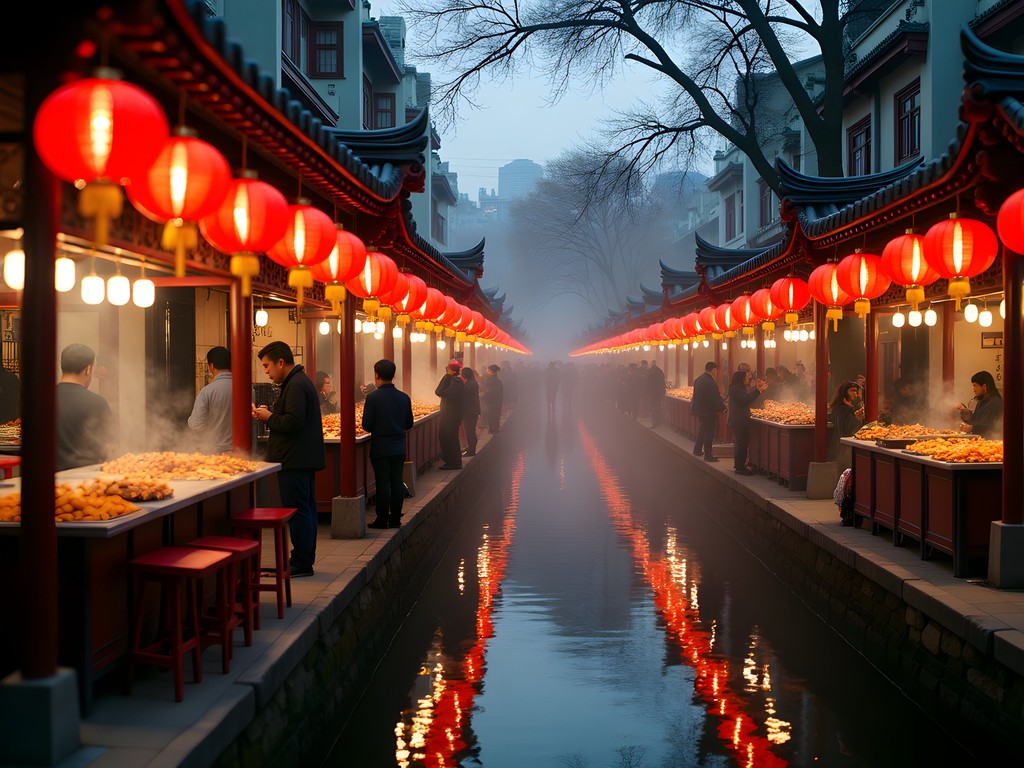
💡 Pro Tips
- Visit food streets between 5-8 PM when they're most lively but before tourist crowds peak
- Look for stalls with lines of locals rather than those with English menus
- Bring small bills (¥10 and ¥20) for easier transactions with street vendors
Night Markets and Stargazing: A Nurse's Perfect Evening
My years as a trauma nurse taught me to find moments of peace amid chaos. In Shanghai, this translated to late-night food explorations followed by quiet stargazing sessions. The city's light pollution challenges sky observation, but I found surprising pockets of relative darkness in places like Century Park.
Before these nighttime adventures, we'd fuel up at bustling night markets. My favorite was Shouning Road, affectionately known as 'Crayfish Street.' Here, rows of vendors specialize in spicy crayfish, grilled squid, and other seafood delicacies. The market peaks around 10 PM—perfect timing for a night owl like me accustomed to hospital schedules.
After filling our stomachs with chili-laden crayfish and cold Tsingtao beer, we'd find a quiet spot in Century Park with my star guide app to identify constellations visible through Shanghai's haze. The juxtaposition of ancient culinary traditions and modern skyscrapers created a unique backdrop for contemplating the night sky—something I often do during breaks on overnight shifts back home.
I always carry my insulated food container filled with hot jasmine tea during these outings. The familiar comfort of warm tea under an unfamiliar sky grounds me, no matter which continent I'm exploring.
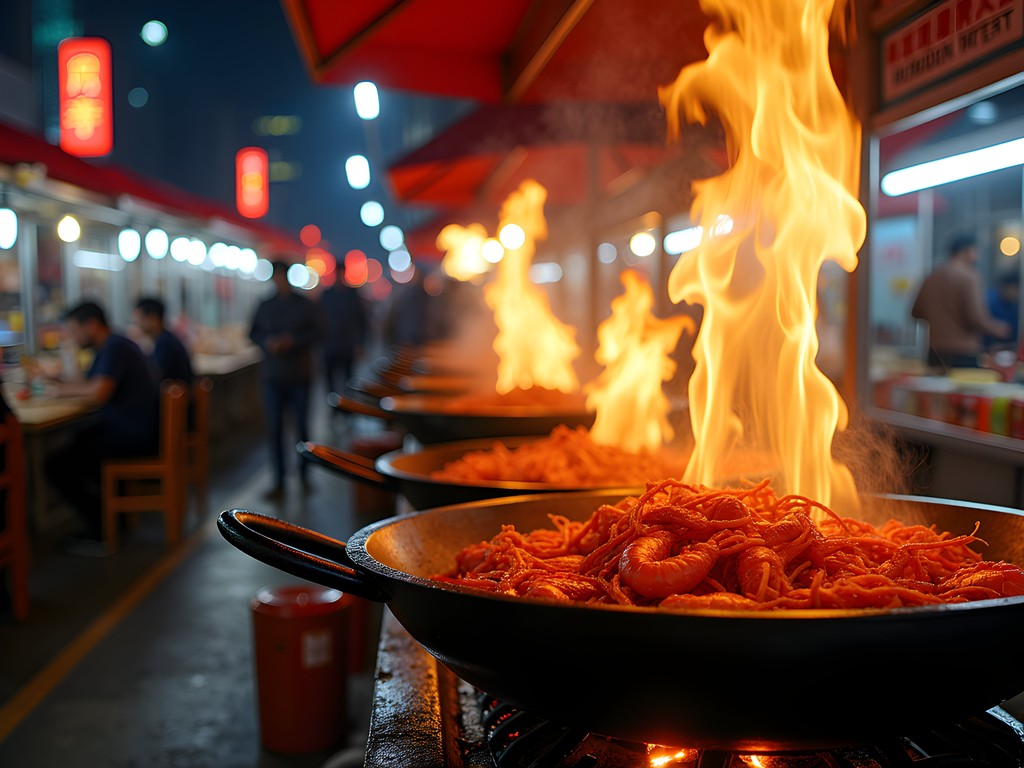
💡 Pro Tips
- Visit Shouning Road (Crayfish Street) after 9 PM when it reaches peak energy
- Download a VPN before your trip to access your favorite star apps in China
- Carry hand sanitizer and wet wipes for messy street food experiences
Morning Rituals: Breakfast Streets and Park Life
The gentle morning light filtering through Shanghai's plane trees reveals a completely different food scene. As someone who transitions between day and night shifts, I appreciate experiencing a city at all hours. Shanghai's breakfast streets offer a window into local daily life that few tourists witness.
Fuxing Road near Xiangyang Park became our morning ritual. By 6:30 AM, vendors were already steaming towers of bamboo baskets filled with shengjianbao (pan-fried soup dumplings)—crispy on the bottom, juicy inside, and absolutely worth the early wake-up call. Watching elderly residents practice tai chi while enjoying fresh soy milk and youtiao (fried dough sticks) connected me to Shanghai's daily rhythm in ways no tourist attraction could.
One morning, we joined locals in Xiangyang Park for their community exercises. My quick-dry travel towel came in handy after working up a sweat trying to follow along. The weather patterns in fall Shanghai reminded me of Oakland's microclimates—misty mornings giving way to warm afternoons, perfect for my habit of tracking temperature variations.
After breakfast, we'd often wander to nearby wet markets where locals haggled over fresh produce. I used my travel chopsticks to sample fruits I'd never seen before, offered by friendly vendors amused by this American nurse's enthusiasm for their everyday foods.
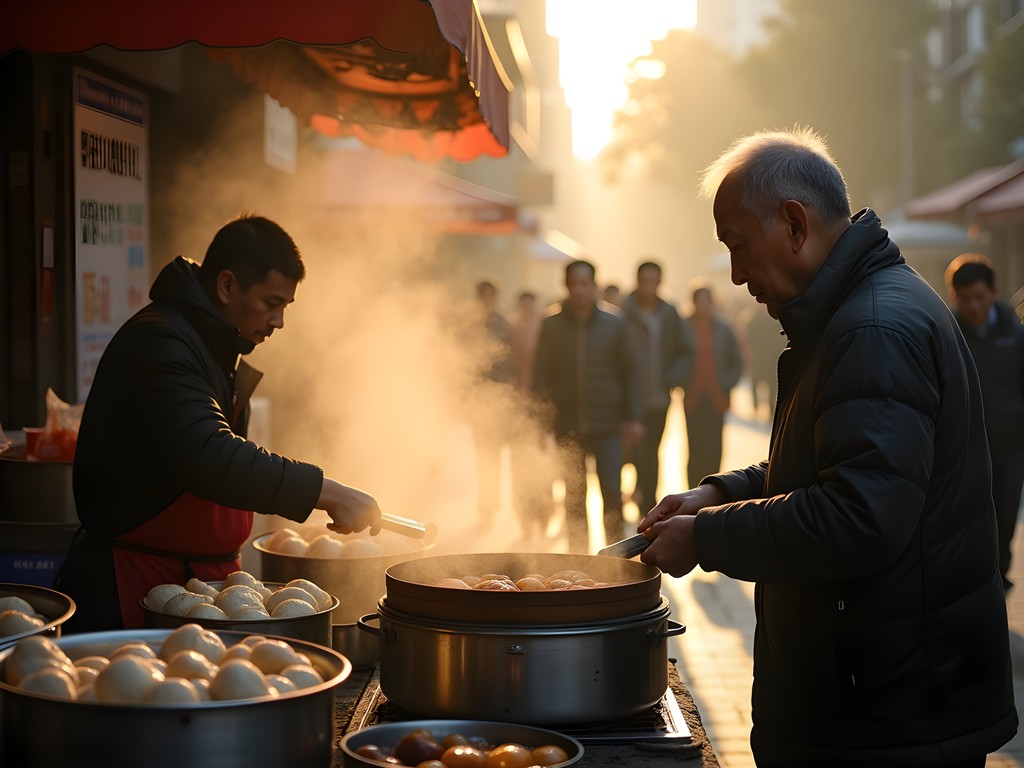
💡 Pro Tips
- Arrive at breakfast streets before 7:30 AM to see locals in their morning routines
- Learn the phrase 'Tài là' (too spicy) if you're sensitive to heat
- Carry a reusable shopping bag for impromptu market purchases
Family-Friendly Food Adventures in the French Concession
Though this trip was with a friend rather than my daughter, I couldn't help scouting family-friendly food experiences for our next visit. Shanghai's former French Concession, with its tree-lined streets and relaxed atmosphere, offers the perfect balance of authentic food and approachable settings for younger travelers.
Wulumuqi Road (often called Wuyuan Road by locals) features a stretch of small restaurants and food shops where families can sample Shanghai classics without the intensity of night markets. Here I discovered a shop making hand-pulled noodles with a window display that would fascinate any child—watching the noodle master transform dough into silky strands through a mesmerizing dance of stretching and folding.
Nearby Wukang Road offers artisanal ice cream shops where traditional Chinese ingredients like black sesame and osmanthus flower are transformed into creamy treats. I recorded these discoveries in my waterproof travel notebook, noting which places would most appeal to my daughter's adventurous yet developing palate.
One afternoon, we stumbled upon a cooking class designed for visitors in a converted lane house. The instructor showed us how to wrap xiaolongbao (soup dumplings), a skill I'm eager to share with my daughter. My collapsible food container came in handy to take our culinary creations back to the hotel—a practical tool for family travelers looking to save leftovers or pack snacks for sightseeing days.

💡 Pro Tips
- Look for restaurants with picture menus for easier ordering with children
- Visit the French Concession between 2-5 PM when it's less crowded
- Consider booking a family cooking class to learn dumpling-making together
Weather Patterns and Seasonal Specialties
My fascination with weather patterns serves me well when planning food adventures. Shanghai's autumn brings comfortable temperatures hovering between 15-22°C (59-72°F), with occasional light rain—perfect conditions for exploring outdoor food streets without the summer humidity or winter chill.
What many visitors don't realize is how closely Shanghai's food offerings follow seasonal weather patterns. As temperatures drop in late fall, vendors begin offering warming foods like roasted sweet potatoes and chestnuts. The scientific precision with which locals match food to weather conditions resonates with my medical background—there's a therapeutic aspect to consuming the right foods for your environment.
During one misty morning, we discovered vendors selling fresh hairy crab, a delicacy available only during autumn months when the females are full of roe. Following local advice, we enjoyed this seasonal treat with warming ginger tea to balance the crab's 'cooling' properties according to traditional Chinese medicine—a concept that parallels some of the holistic approaches I've observed in nursing.
My compact umbrella became essential during brief afternoon showers, allowing us to continue our culinary explorations without interruption. I've learned from years of outdoor festivals and stargazing trips that the right gear means weather never has to disrupt your plans—a philosophy that applies equally to food streets in Shanghai and meteor showers in the American Southwest.

💡 Pro Tips
- Try hairy crab in autumn months (October-November) when they're at their peak
- Bring layers for temperature fluctuations between morning and evening food outings
- Use a weather app to plan indoor food hall visits during rain showers
Final Thoughts
As our taxi wound its way back toward Pudong International Airport, the glittering Shanghai skyline emerged once more—but now it felt different. Beyond those postcard-perfect towers lay a network of food streets where I'd discovered the city's beating heart. The rhythm of vendors' calls, the precision of knife work on cutting boards, and the gentle steam rising from bamboo baskets had become as familiar as the beeping monitors and hushed conversations of my hospital night shifts.
Shanghai's hidden food streets taught me that authentic culinary experiences connect us across languages and cultures. Whether you're a night owl like me, a family traveling with curious children, or someone who appreciates the scientific relationship between seasonal weather and local cuisine, Shanghai's food landscape offers endless discoveries beyond the tourist trail. As I plan my return with my daughter, I'm already mapping new alleyways to explore and flavors to introduce her to—continuing our tradition of educational travel that balances wonder with practical knowledge. Until then, I'll be practicing my dumpling-folding technique and watching the night sky back in Oakland, carrying Shanghai's flavors and stories with me.
✨ Key Takeaways
- Explore beyond tourist areas like The Bund to discover authentic food streets where locals eat
- Visit different neighborhoods at various times of day to experience Shanghai's complete culinary rhythm
- Seasonal specialties like autumn hairy crab offer insight into traditional Chinese food-weather connections
- Family-friendly food experiences in the French Concession balance authenticity with accessibility
- Early morning breakfast streets provide a window into daily Shanghai life most tourists miss
📋 Practical Information
Best Time to Visit
Fall (September-November)
Budget Estimate
$50-100 per day for food adventures
Recommended Duration
5-7 days
Difficulty Level
Easy

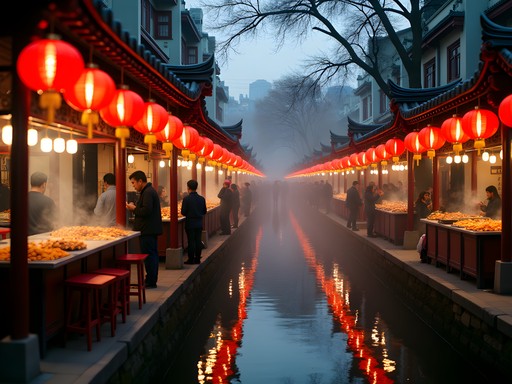
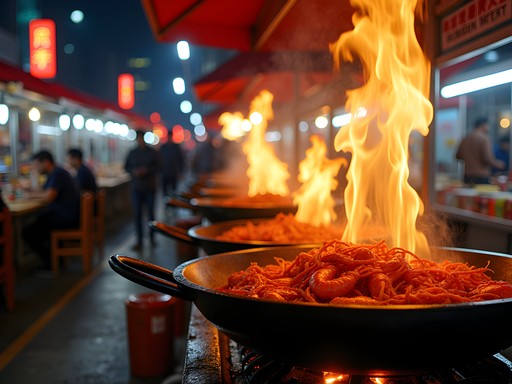

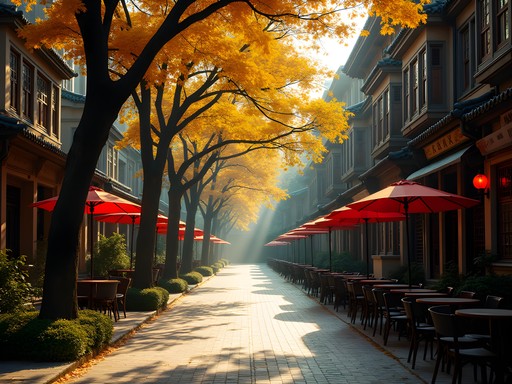
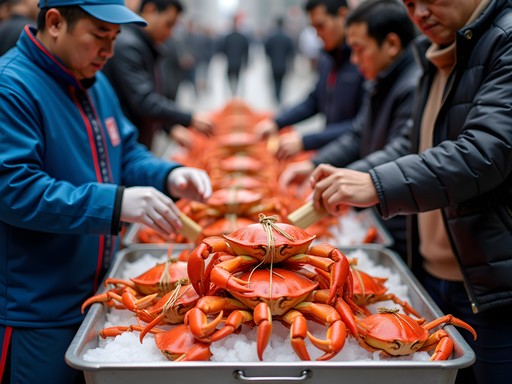



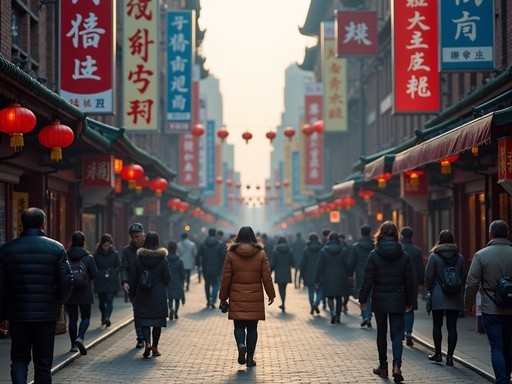





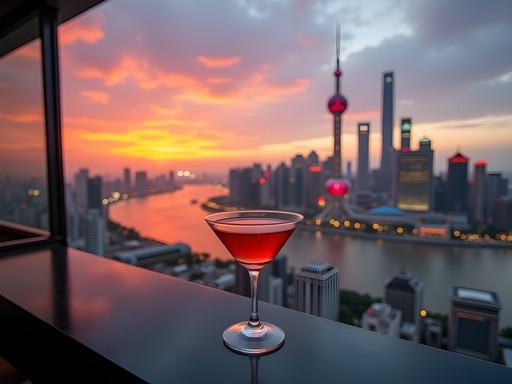
Comments
nomadexplorer
Just booked my tickets to Shanghai for January!!! This post couldn't have come at a better time! Can't wait to try everything you mentioned, especially those breakfast streets. Your night nurse perspective is so unique - I never would have thought about how that schedule could actually be perfect for exploring!
Nathan Sanchez
That's awesome! January will be chilly but perfect for hot soup dumplings and steamy noodles. And yes, the night shift schedule was surprisingly great for food exploration - you get to see both worlds!
Douglas Bradley
What I appreciate most about this piece is how you've captured the rhythm of Shanghai's food culture. The city operates on such distinct culinary timeframes - morning breakfast streets buzzing by 6am, lunch spots that are only open for 3 hours, night markets that come alive after dark. It's a completely different experience from Western dining patterns. During my research visits, I found that following local office workers at lunchtime often led to the most authentic spots. The alleyways near Yuyuan Garden (away from the tourist section) had some remarkable xiaolongbao places where you could watch the entire preparation process. Great work highlighting these ephemeral food moments that make Shanghai special.
beachphotographer
The contrast between modern Shanghai and these traditional food streets is what makes the city so fascinating. Got any recommendations for vegetarian options in these hidden spots?
Nathan Sanchez
Absolutely! Many Buddhist-influenced stalls offer amazing vegetarian dumplings and noodles. Look for 'su cai' (素菜) on signs or menus - it means vegetarian. The mock meat buns near Jing'an Temple were mind-blowing!
Fatima Sims
Nathan, your post took me right back to my own adventures in Shanghai last year! I also found that getting away from The Bund was where the magic happened. We stumbled upon this tiny place in Tianzifang where an elderly couple had been making hand-pulled noodles for 40+ years. The wife would roll and pull while the husband prepared the broth - pure artistry! One tip for anyone heading there: I found having a pocket translator incredibly helpful for reading menus and chatting with vendors. The connections you make with local food artisans are what make these experiences so special.
oceanvibes
Could you share the exact location of that morning market with the scallion pancakes? Planning a trip in November and would love to check it out!
Nathan Sanchez
It's on Wulumuqi Road near Fuxing Park. Not fancy at all, just a few vendors that set up around 6am. The lady with the red awning makes the best ones!
adventurefan
OMG those soup dumplings in your third photo look INCREDIBLE!!! 🤤 I'm literally drooling at my desk right now. Adding Shanghai to my bucket list just for those!
exploregal
I was in Shanghai last month and wish I'd had this guide then! We stuck mostly to the touristy spots and I definitely felt like we missed the authentic food scene. The breakfast streets you mentioned sound incredible - there's nothing like watching locals start their day to really understand a city. Did you have any issues with the language barrier in these hidden spots?
Nathan Sanchez
The language barrier was definitely there, but I found having pictures of dishes on my phone really helped! Most vendors were super patient with pointing and simple gestures. Also learned that a smile goes a long way!
exploregal
That's good to know! I'll definitely be braver about venturing off the beaten path next time.
greenwalker4680
Those hidden food streets look amazing! Exactly what I want to experience when I visit Shanghai next year.
Gregory Boyd
Excellent breakdown of Shanghai's culinary landscape beyond the obvious spots. I've been documenting food streets across Asia for my blog, and Shanghai presents a fascinating contrast between preservation and modernization. One observation I'd add: the timing of visits significantly impacts the experience. The morning food streets Nathan mentions operate on a completely different rhythm than evening venues. The demographic shift is particularly noteworthy - elderly locals dominate mornings while younger crowds emerge after dark. I found Yunnan Road particularly interesting as it transforms throughout the day. Tip for photography enthusiasts: the steam from food stalls creates incredible lighting conditions around dusk, especially during winter months.
wanderfan
We just got back from Shanghai and found this amazing breakfast street near Jing'an Temple that isn't mentioned here. Lots of local seniors doing tai chi while enjoying congee and these amazing scallion pancakes. The vendor at the corner with the red awning makes them with an extra egg cracked on top - game changer! Nathan, did you make it to that area?
Venture X
Premium card with 2X miles, $300 travel credit, Priority Pass